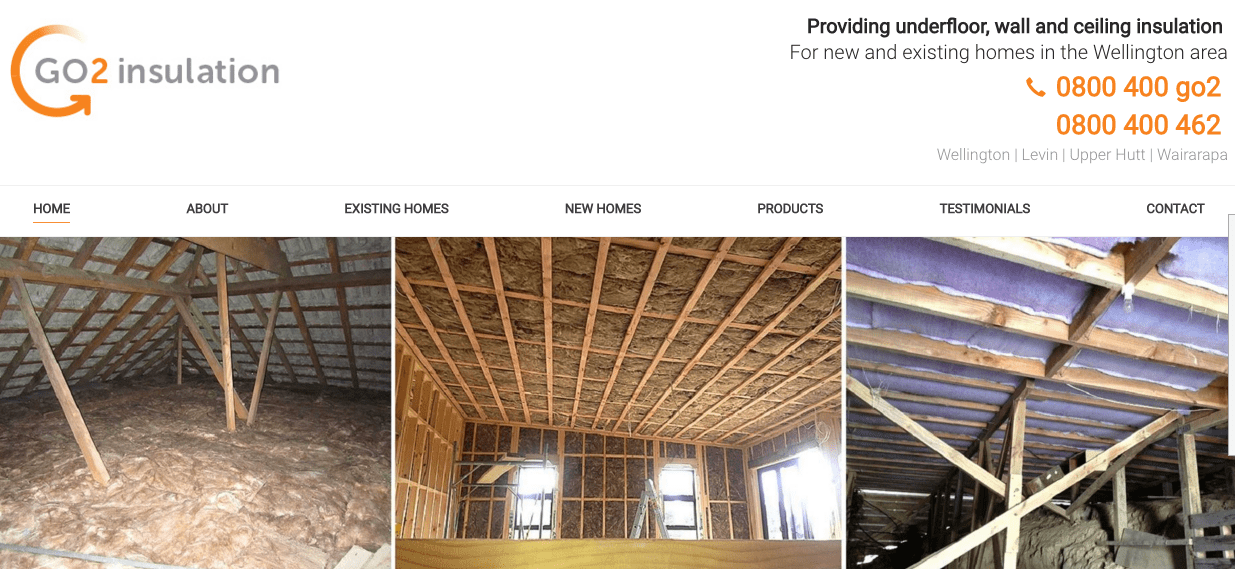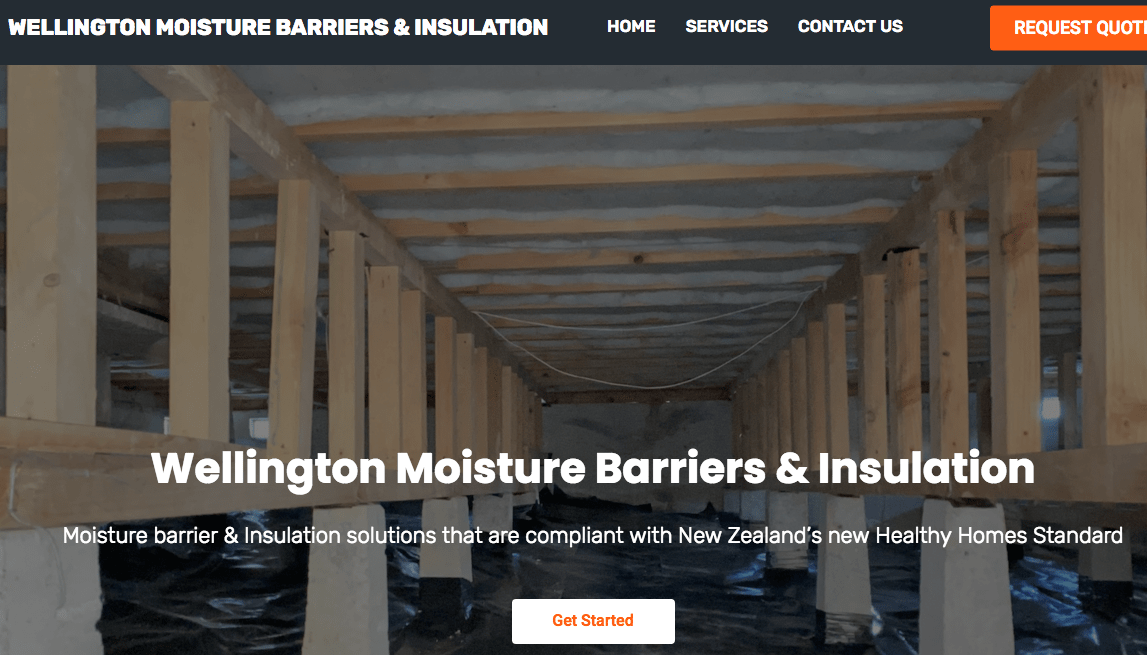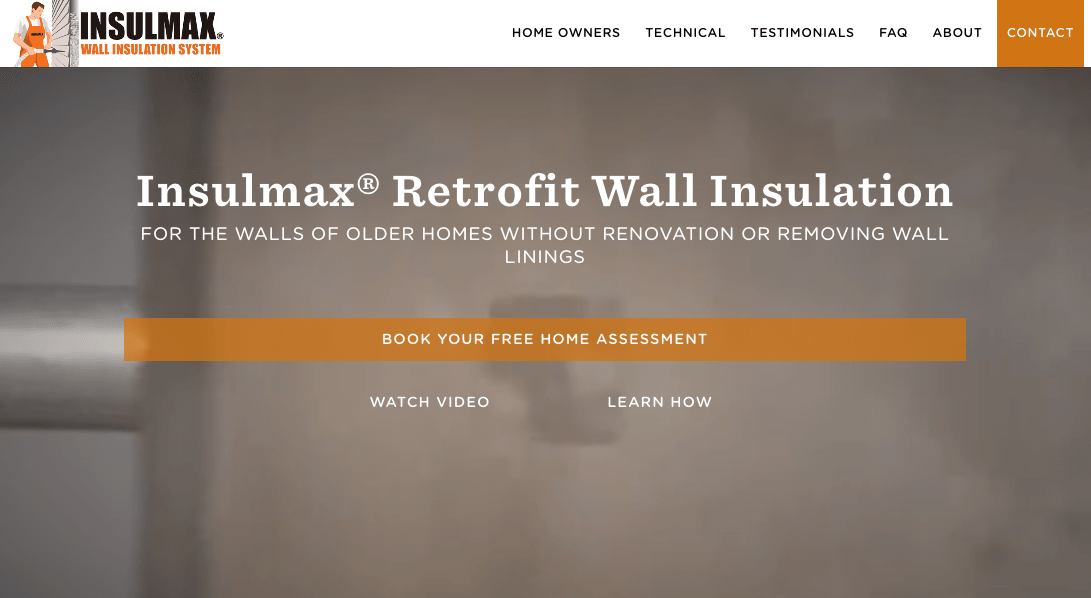The 6 Best Insulation Wellington Specialists
Feel that the air inside your home isn’t as cold or warm despite maxing out your temperature-setting appliances? It might have to do with your home’s insulation, which is why we’ve listed the best insulation Wellington specialists here for you.
We handpicked the ones who are qualified, reliable and experienced in insulating your home safely. Also, we chose those who are amiable and helpful as well as having great rates.
Now if you’re all set, here are the best insulation Wellington specialists!
1) Sustainability Trust

| BEST FOR | High Standard Ceiling and Underfloor Insulation |
| SERVICES | Heat Pumps & HeatingCentral HeatingInsulationHome Energy AssessmentsSubsidies & FinanceAdvice for Rentals
Condensation, Ventilation & Moisture Lighting |
| WEBSITE | https://sustaintrust.org.nz/insulation |
| ADDRESS | 2 Forresters Lane, Wellington 6012, New Zealand |
| CONTACT DETAILS | 0508 78 78 24[email protected] |
| OPERATING HOURS | Monday to Saturday: 8.30am – 4.30pm |
Sustainability Trust is a social organisation dedicated to providing people a warmer, healthier and more energy-efficient home.
Among the services they offer are heating, insulation, lighting, and ventilation. In the area of insulation, they specialise in ceiling and underfloor supply and installation.
Their expert staff can inspect your place to figure out what insulation is best for your home or budget. You can rest assured that the installation will be done to a high standard.
They have a 0% interest repayment plan too that you can pay off in up to 12 months. That’s a convenient option letting you focus on other concerns you may have first.
Other than that, if you live in a low-income area or have a Community Services Card, you may be eligible for a free insulation service from them.
Highlights
- Specialise in ceiling and underfloor supply and installation
- Use high-quality products
- Expert & knowledgeable staff
- 0% interest repayment plan option
Customer Reviews
A client from Newlands, Kieran, writes on Google Business:
“We like the values of the Sustainability Trust, the price was really reasonable, and the feedback we had read from other customers was great. The installers made short work of what turned out to be a pretty tricky job with our ceiling and underfloor insulation. We can’t recommend you highly enough!”
2) GO2 Insulation

| BEST FOR | Top-Spec Insulation Products |
| SERVICES | Existing HomesNew HomesProducts |
| WEBSITE | https://www.go2insulation.co.nz/ |
| ADDRESS | 57 Takapu Rd, Takapu Valley, Wellington 5028, New Zealand |
| CONTACT DETAILS | 0800 400 462 |
| OPERATING HOURS | Monday to Saturday: 7.30am – 5.30pm |
If you’re a homeowner, landlord or property developer requiring insulation, GO2 Insulation is the company to call! Their service is also affordable and timely.
They are certified insulation specialists and comply with NZ standards for safe and proper installation. They can provide wall, ceiling, and underfloor insulation installs.
Their professional team uses top-quality products to insulate your property. This results in a cosier and healthier home during any season with lower power costs.
And given their experience, they can take on work whether it’s simple or complex. That’s why they belong to the best insulation Wellington specialists list!
Highlights
- Certified insulation specialists
- Uses top-quality insulation products
- Works on both existing and new homes
- Complies with NZ standards for safety and quality installs
- Affordable rates
Customer Reviews
One of their clients, Gena, writes on the web page:
“I just wanted to say, thank you very much for the easy organising of our insulation. Your install guys were fantastic, clean and thoughtful. They got in and got out with no hassles. Would highly recommend using Go2 Insulation. Thanks again.”
3) Wellington Moisture Barriers & Insulation

| BEST FOR | Expert Workmanship & Competitive Prices |
| SERVICES | Ground Moisture Barrier InstallationInsulation Installation & Upgrades |
| WEBSITE | https://www.moisturebarrier.co.nz/ |
| ADDRESS | 9 Maybury Way, Island Bay Wellington, New Zealand |
| CONTACT DETAILS | 021657387[email protected] |
| OPERATING HOURS | Monday to Sunday: 6am – 10pm |
Rental properties currently have a new requirement in place for insulation, which is the Healthy Homes Standard. Wellington Moisture Barriers can help you with that.
They can help install, retrofit, or replace your insulation for your ceiling, roof and underfloor. That’s to make you comfortable whether it’s sweltering or chilly outside.
As a Site Safe member, they work in accordance with strict safety and health standards. This keeps their employees and clients safe throughout the project.
They pride themselves on their superb workmanship and low rates and cover the entire Wellington Region.
Highlights
- Superb workmanship and low rates
- Complies with the new Healthy Homes Standard
- Installs ceiling, roof and underfloor insulation
- Site Safe member
- Also offers ground moisture barrier installation
Customer Reviews
Check out the feedback of one customer, Bridge Lewis, on Google Business:
“Honest, trustworthy guy. Given his work and moral ethics – I wouldn’t hesitate to recommend him. We need more tradestaff like him in the world.”
4) Insulmax Wall Insulation System

| BEST FOR | Blown Mineral Fibre Wall Insulation |
| SERVICES | Insulmax Retrofit Wall Insulation |
| WEBSITE | https://insulmax.co.nz/ |
| ADDRESS | 50 Wainui Road, Waiwhetu, Lower Hutt 5010, New Zealand |
| CONTACT DETAILS | +64 4-972 2523 |
| OPERATING HOURS | Monday to Saturday: 7am – 9pm |
Insulmax Retrofit Wall Insulation involves blowing mineral fibre through a small cavity in your cladding or wall lining. This can be installed in all kinds and types of NZ homes.
This product is CodeMark-certified, which assures you of it being high performance and reliable as well as complying with the NZ Building Code.
It can make your home warmer, drier and more comfortable. The insulation process merely takes 2 days to complete, including the area being tidied and cleaned for you.
Owing to its affordability and ease of installation, Insulmax has seen growing demand in New Zealand. And to top it off, you get a written guarantee of 50 years sans the paint!
Thus, Insulmax has to be one of the best insulation Wellington specialists.
Highlights
- Suitable for all kinds and types of NZ homes
- CodeMark-certified
- Warmer, drier and more comfortable home
- Licenced insulation installers
- Affordable and easy to install
- 50-year written guarantee
Customer Reviews
One customer wrote a review on Insulmax’s website:
“You have a top crew who worked non-stop for several hours until the job was complete. Good communication throughout the process and a walk through with the installer and a thermal camera showed just how complete and thorough the final result was. I already had the ceiling and floors insulated but having the walls done has made the house significantly warmer. Less heat pump and much less firewood being used. Many thanks.”
5) AAA Insulation

| BEST FOR | Honest and Reliable Service |
| SERVICES | Wall InsulationRoof InsulationFloor Insulation |
| WEBSITE | https://aaainsulation.co.nz/ |
| ADDRESS | Wellington, New Zealand |
| CONTACT DETAILS | +64 21 375 359[email protected] |
| OPERATING HOURS | Monday to Friday: 9am – 5pm |
Keep your home warmer or cooler while cutting your energy costs through AAA Insulation. They have the best products and modern equipment to insulate your walls, roofs and floors.
They utilise Jet Stream Max mineral wool blown into your roof. They can also lay Warmafloor, which is an effective and moisture-resistant insulation underneath the floor.
Their honest and dependable staff can assist you in your needs. Say you have a budget — they will work within those terms and give you the best possible solution for your means.
Note that AAA Insulation serves the lower North Island from Gisborne to Wellington.
Highlights
- Modern insulation equipment
- Offers insulation for walls, roofs and floors
- Uses high-quality products
- Honest and dependable staff
- Serves lower North Island locations
Customer Reviews
Here’s Nathan Hume who commented on Facebook about one of the best insulation Wellington specialists:
“The team at AAA Insulation were able to install my new Cosywall insulation within a day from the external wall. You can’t even tell the work had been done. Terrific job. Makes such a difference to keeping heat in. Highly recommended.”
6) Total House

| BEST FOR | High-quality insulation products |
| SERVICES |
Ceiling and underfloor insulation, Acoustic insulation, Wall insulation, Insulation product supply, Moisture barrier installation
|
| WEBSITE | http://www.totalhouse.co.nz/ |
| ADDRESS |
18 Goodshed Road, Maidstone, Upper Hutt
|
| CONTACT DETAILS |
Call Us: 0508 TOTAL 1 (0508 868 251)
Email Us: [email protected] |
| OPERATING HOURS | Monday to Friday: 8am-5pm |
Total House is an expert in insulation services, ensuring premium quality output for both your home and office.
They offer a complete insulation contracting; from the ceiling and walls to the floor, Total House will definitely help you keep warm on cold days.
Acquire their free assessment on your residential and commercial space and let them do the rest of the work thereafter!
Highlights
- Free advice on all home energy solutions
- Quality workmanship
- Quick service
Customer Reviews
Take a look at a review left by Graham Archer, a very satisfied client of Total House, proving just how amazing they are in their works.
“We had a very unsatisfactory situation with another Insulation Company and when we mentioned the problems we were having to a builder friend he told us, as a better choice, we should contact Total House in Upper Hutt, which we duly did and oh what a difference. From total House Upper Hutt, we received prompt and very pleasant service, a fair price and contact via phone, text and email keeping us continually up to date and informed. The inspection, quote and install were done in a quick friendly manner, on time, on the right day. All things we hadn’t been getting previously. Going on our experience this Upper Hutt Total House team in our book scores a 10 out of 10 and we whole heartily do not hesitate to recommend them to anyone requiring an insulation install to be undertaken from a reputable and reliable Company.”
And that’s a wrap for the best insulation Wellington specialists! These contractors will help make your home toasty warm in winter and breezy cool in summer.
Do you have any questions you’d like to ask us? If you have one, kindly drop us a line and we’ll get back to you as soon as we can.
Additionally, you may be interested in the best heat pumps Wellington installers. There, they can install for you energy-efficient heat pumps that will reduce your energy bills!



